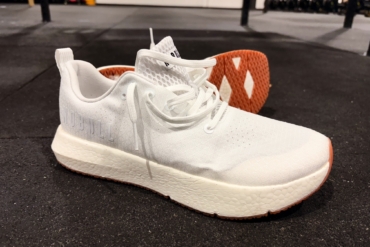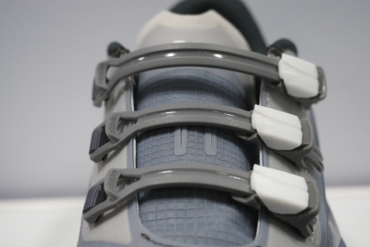Over the past few years, we’ve seen a flood of new brands enter into running footwear — Speedland, Allbirds, Naked, Vimazi, Hilma, and No Bull, to name a few.
Now, one of our favorite running apparel brands, Tracksmith, is throwing its hat in the ring with the debut of the Eliot Runner.
In short: For its first shoe, Tracksmith did a fantastic job. It’s a low-profile, not highly cushioned, but beautiful quality shoe. That being said, it’s not just its looks that set it apart. Tracksmith used a unique construction in the insole and midsole built with Pebax elastomers.
- Materials: Engineered mono mesh upper, supercritical Pebax sock liner, Pebax midsole
- Weight: 9.4 oz. (men); 8 oz. (women)
- Stack height: 33.5 mm (men); 24.5 mm (women)
- Midsole drop: 9 mm
Pros
- Comfortable
- Impeccable quality
- Great lifestyle and daily driver running shoe
Cons
- Narrower fit
- Not super cushioned
Tracksmith Eliot Runner Review
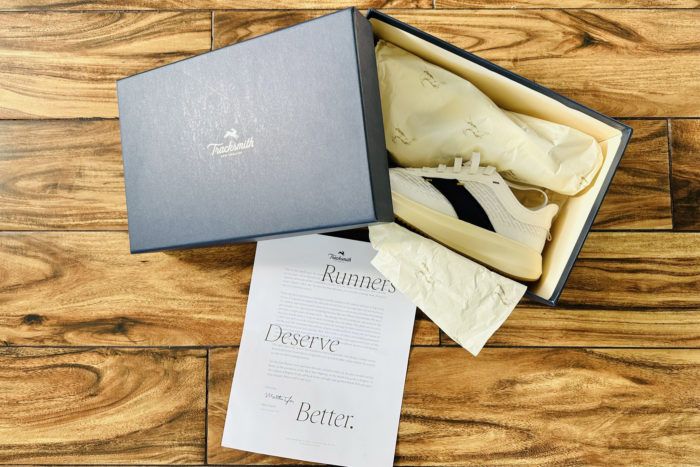
Unboxing the Eliot Runner
Before even opening the box, it was clear that Tracksmith wanted to make a good impression. Instead of the flimsy cardboard box most shoe companies use, Tracksmith’s box is thick and sturdy and almost feels like thin plywood.
Wrapped in tissue paper was my pair of Tracksmith Eliot Runners. I’ve set my eyes on thousands of running shoes, and I can honestly say that these are one of the best-looking shoes I’ve seen. The one thing that really stood out to me was the quality of the design and materials used.
Usually, when I test running shoes from small brands (or even big brands), I can see minor flaws in construction. A small amount of glue seeping out from the seams or a botched stitch in the upper. The Eliot Runner is flawless, a piece of footwear art. It’s by far the highest-quality manufactured running shoe I’ve seen. It’s one of those shoes you’ll hate to get dirty.
Luxurious but Long and Narrow Fit
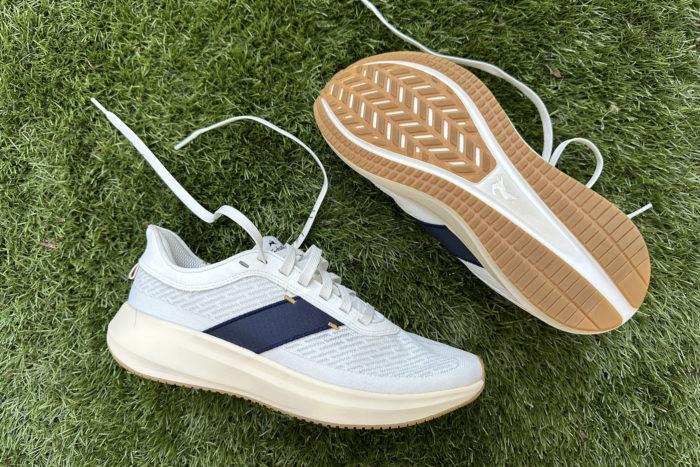
My initial step-in impressions were positive. The collar around the ankle bone with a mild Achilles flair and tongue were both heavily padded and cut low enough to prevent rubbing. The tongue attaches to the engineered mono-mesh upper using a mesh bootie design that really wraps and secures the midfoot comfortably.
I found the fit to be long and narrow with a relatively low-volume toe box. My normal shoe size netted more space in front of the toes than in other shoes the same size, but it didn’t seem to affect my running. I could certainly foresee runners with really wide and voluminous feet feeling cramped in the toe box. If you’re in between sizes, I would opt for the smaller size. I wonder if a half-size smaller would be better for me.
Performance: Nothing But Pebax, Baby!
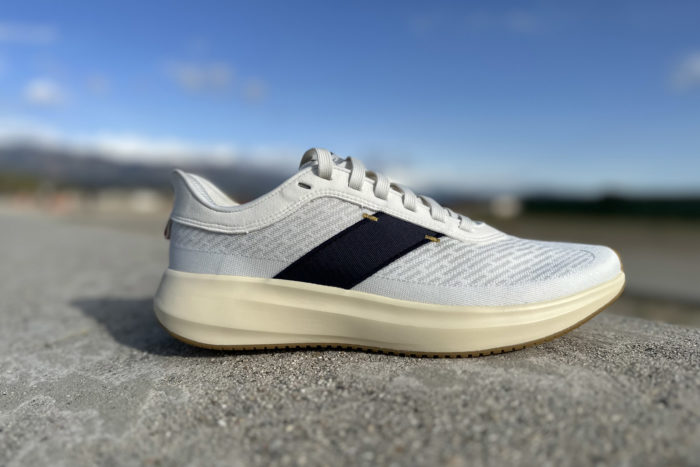
Once I got over my hesitation to get these pretty boys dirty, I was pleasantly surprised to find out there’s more to the Eliot Runner than looks. The Eliot Runner reminds me a lot of the Nike Pegasus 39. Besides a strikingly similar silhouette, they share similar stack height and drop measurements. However, the Eliot Runner certainly wins out in the quality of materials and construction.
The Eliot Runner is marked as an everyday training shoe, and I would absolutely agree with that. I tested out a few surges at a sub-5-minute-per-mile pace, and it felt forced and not as high energy as today’s purposely built uptempo and speed shoes. Its sweet spot is those monotonous miles somewhere between marathon pace and recovery run pace. While I didn’t get to test long-term durability, from what I felt, it seems like these would hold up better than most shoes.
Midsole and Insole
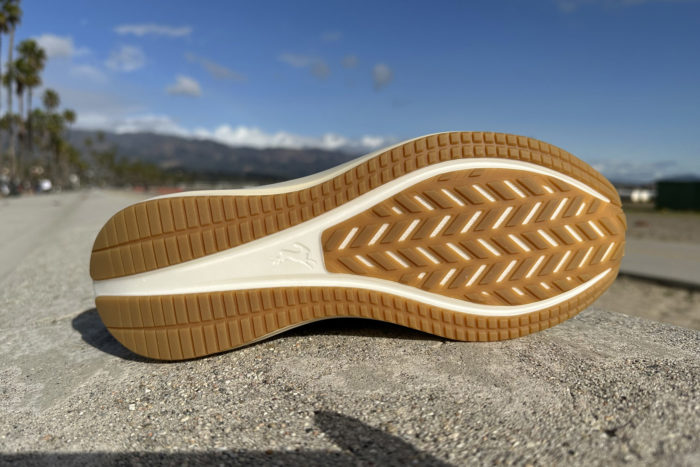
It uses two separate layers (one in the midsole and one in the insole) of the ever-so-popular Pebax. One unique design element about the Eliot Runner is that the insole is three times the thickness of normal insoles and is made with Pebax. This places more Pebax closer to your feet. Pebax has hit the running shoe industry hard in the past 2 years, most commonly found in super shoes. Pebax is lighter, gives back more energy, and is more durable than traditional EVA and TPU foams found in most running shoe midsoles. It also happens to be more expensive.
Cushioning
It largely depends on your frame of reference. If you’re running in HOKAs (or any) carbon fiber super shoe, you won’t find these cushioned at all. At 33.5 mm under the heel and only 25 mm under the forefoot, I wouldn’t put the Eliot Runner in a highly cushioned running shoe category. It qualifies as a more moderate-to-low cushioned shoe.
The ride is sensitive and feels close to the ground, especially under the forefoot. It almost feels more like a racing flat under the forefoot than a daily trainer. If you prefer a flexible, low-profile running shoe, you’ll feel right at home in these. I found it moderately responsive, but less due to the Pebax foam and more from the low profile with less cushioning and my ability to pop off it quickly.
Conclusion
Hats off to Tracksmith for putting together one heck of a first-edition shoe. I can honestly say the Eliot Runner is one of the highest-quality running shoes I’ve tested. The materials and styling are top-notch. As a lifestyle shoe, there’s no other running shoe that can compete. As a running shoe, I also commend Tracksmith. I personally prefer a more cushioned everyday trainer, but those who like a moderately sensitive, lower-profile running shoe will enjoy the Eliot Runner.
Many will find the $198 price tag a hefty price to pay for a non-super shoe. If you’re just looking at it as an everyday running shoe, I agree that it’s expensive. There are certainly similar riding shoes at a lower cost. However, Tracksmith has elevated the Eliot Runner beyond just a running shoe you put miles in. Those who appreciate the brand and respect the heritage upon which Tracksmith was built will find the price in line with what you’ve always gotten from Tracksmith products: high-quality materials and unwavering craftsmanship.





